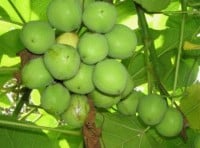
AFRICAN BIO-FUEL GIANT SHAKES UP OIL INDUSTRY

Cameroon emerges as top bio-diesel producer
- Dateline
- 25 August 2020
A decade of intensive investment in bio-diesel plant has paid off for Cameroon. The central African state now challenges neighboring Nigeria in terms of fuel oil production, but from biological, not fossil sources.
Located on the equator, and with very high annual rainfall, Cameroon was quick to follow India’s lead in developing Jatropha to produce plant oil, and ultimately bio-diesel. For a country once rated by the Economist as having such poor infrastructure that it impeded economic progress, this is an amazing success story.
Cameroon’s natural assets included vast swathes of unused land suitable for cultivation. And, unlike Brazil, these areas did not require deforestation. Cameroon now has millions of hectares growing Jatropha, producing a crude oil equivalent of 800,000 barrels per day.
The spin-offs for the African state have been profound, transforming it from a political and economic backwater into a major energy producer.
Central to Cameroon’s success was their innovative approach to Jatropha cultivation; choosing only the best varieties for biofuel; and near-perfect climatic conditions. By contrast India has more acreage under Jatropha, but lower overall yields.
This prosperity has come at a cost, in terms of increased tensions with its neighbors, but the government of Cameroon has stuck to its guns and developed an energy industry that, together with other biofuel producers,is reducing demand for fossil oil.
ANALYSIS >> SYNTHESIS: How this scenario came to be
A Black Swan in the Bio-diesel business
Could Africa disrupt the oil industry by developing a competitive biofuel capacity? Despite the conventional wisdom that Africa is a minute portion of the global economy, it has recently been targeted by both China and India for its resources, as well as a market for their products and services.
Cameroon might be regarded as an unlikely player in the global energy field, but has a number of advantages in this scenario. It has existing small, but declining crude oil reserves and production capacity. There are large tracts of unused land, and food production marginally exceeds domestic demand, reducing the likelihood of competition with edible crops. Finally, the climate is ideally suited to large-scale Jatropha production, producing three harvests per year without irrigation.
2003: Indian Railways adopts bio-diesel
The Indian Railways and Indian Oil Corporation (IOC) sign an agreement to produce 800 tonnes per annum of bio-diesel. The Railways offers 500 hectares of its land in Gujarat and Rajasthan on lease to IOC. IOC undertakes to plant the Jatropha, collect the seed and produce the fuel.
2008: Oil prices spike
With the oil price hitting US$ 140 per barrel, interest in biofuels reaches fever pitch. India now has 7.4 million hectares of Jatropha growing along its railway tracks. As a trial, Air New Zealand flies a jetliner running on a blend of normal jetfuel and refined fuel from Jatropha oil. Brazil becomes the leading exporter of ethanol from sugar cane, and expands its Jatropha plantations.
The use of crops as a feedstock for biofuels becomes a major concern worldwide as food shortages hit Asia and parts of Africa.
2009: Financial crisis and new plans
The crash of 2008 takes the wind out of the oil price as demand evaporates. But everyone knows it’s a short respite. Energy pressures will resurface with the recovery, and substitution with biofuels is a long-term strategy. Hybrid vehicles and ultra-efficient diesel powered vehicles are the focus of auto manufacturers world-wide.
Cameroon starts its first Jatropha pilot plant.
2012: Jatropha comes on stream
India is rewarded for its foresight. Jatropha based bio-diesel now accounts for 20% of its domestic consumption. Bio-diesel production from plant oils is now a simple industrial process, but concerns over food competition steer producers increasingly toward Jatropha and algae.
Jatropha’s one drawback is the cultivation time lag. The first harvest is only available five years after planting the seedlings. Cameroon continues to plant and wait.
2016: Bio-diesel flows from Africa
The perfect growing conditions result in bumper harvests for Cameroon. There are millions of hectares under cultivation with Jatropha, and the oil is both exported and converted to bio-diesel domestically.
Food competition is avoided with intercropping, and the economy is benefiting from labor opportunities and the promise of export earnings.
2020: Oil is no longer a crude business
Cameroon has bet the farm on Jatropha, and won. Even as its crude oil reserves dwindle to nothing, the oil industry is booming. There is a renewed focus on the environment, and demand for fossil fuels is falling, but bio-diesel from Jatropha is eco-friendly, renewable, and touted as the energy source of the future.
Links to related stories
- The Next Big Biofuel? - Time, 29 January 2009
- World Oil Production - Official Statistics from the Energy Information Administration
- NZ airline flies jetliner partly run on biofuel - Fox News, 30 December 2008
- MindBullet: FUEL VS FOOD: THE WAR SPREADS (Dateline: 12 November 2013, Published: 24 April 2008)
- MindBullet: ENERGY GLUT CREATES NEW TRADE CHAMPIONS (Dateline: 7 March 2019, Published: 20 April 2006)
Warning: Hazardous thinking at work
Despite appearances to the contrary, Futureworld cannot and does not predict the future. Our Mindbullets scenarios are fictitious and designed purely to explore possible futures, challenge and stimulate strategic thinking. Use these at your own risk. Any reference to actual people, entities or events is entirely allegorical. Copyright Futureworld International Limited. Reproduction or distribution permitted only with recognition of Copyright and the inclusion of this disclaimer.